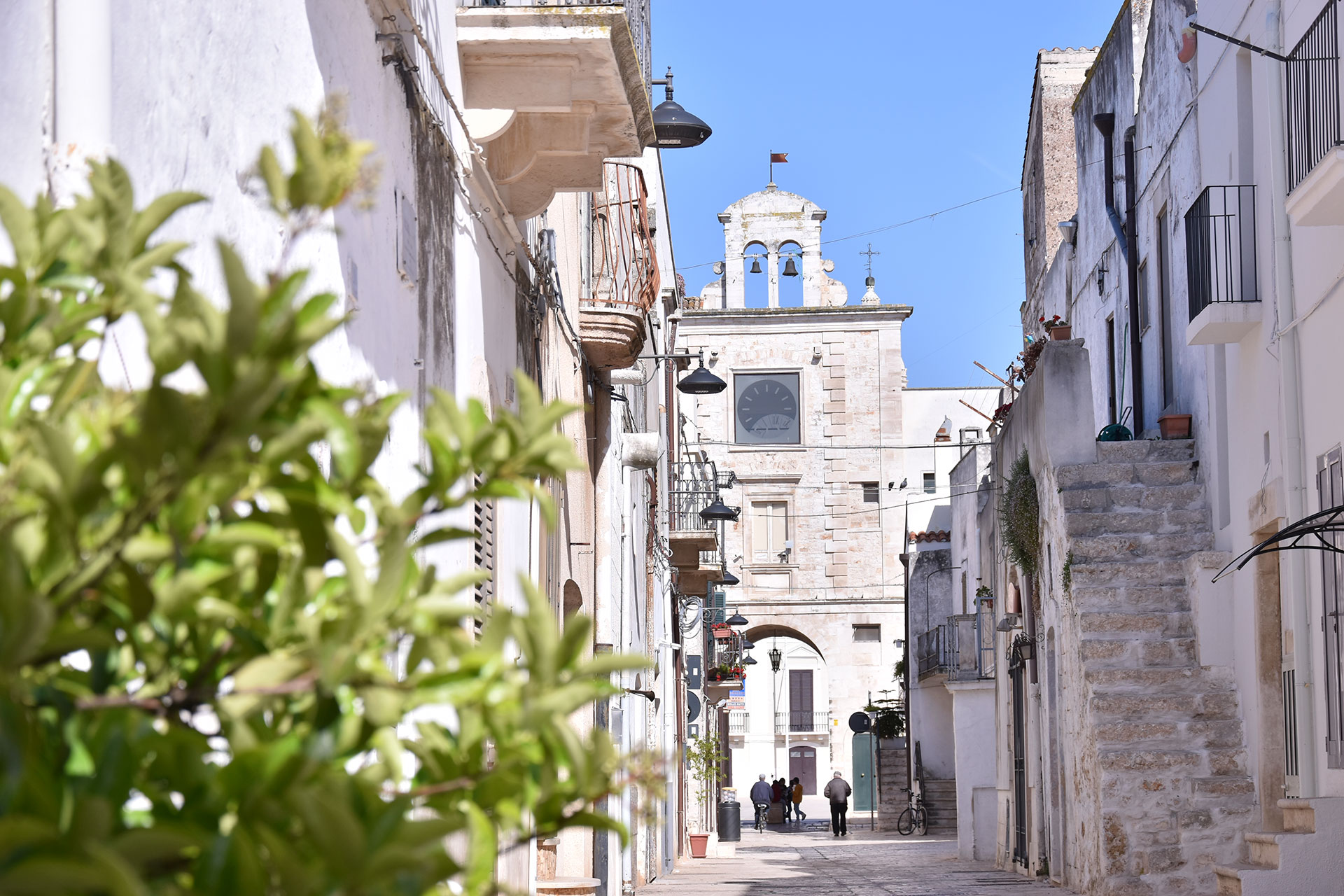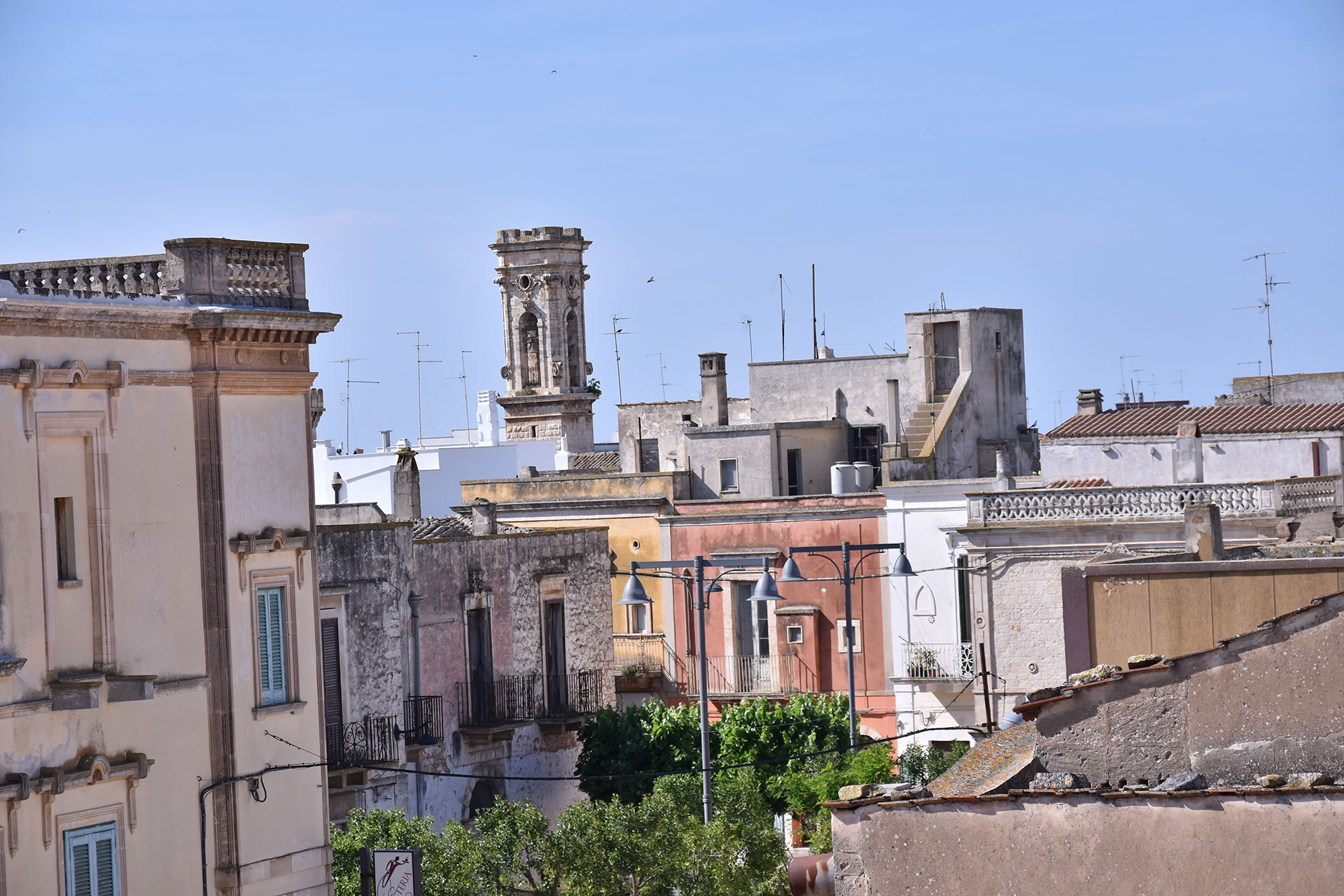Sammichele di Bari
- on Tour
Sammichele di Bari
It is a small town 27 kilometers from the city of Bari on the road to Taranto. The area is located on the Murge Plateau, in a hilly area, in the park of the Alta Murgia Park, at the entrance to the magnificent Valle d’Itria. Sammichele di Bari is a quiet rural town where agriculture and livestock farming are practiced. Famous for its meats and roasts, the most significant event of Apulian food and wine takes place: the Zampina Festival.
Zampina and Bocconcino Festival
The undisputed protagonists of the Sammichele festival are good wine and the famous Zampina, a particular type of sausage seasoned and rolled in a spiral.
The Zampina, Bocconcino and Good Wine Festival is an event that every year in September attracts thousands of tourists from all over the world to Sammichele di Bari and involves thousands of people. A much-awaited event that has transformed Sammichele di Bari into an open-air restaurant. Butchers and restaurateurs offer a varied gastronomic offer, thanks to stands scattered throughout the city center.
The event promotes a program rich in guided tours of the Caracciolo Castle, workshops, exhibitions of local artisans, and shows.
The Origins of the Town
Human settlement in the Sammichele territory in the locality of Canale di Frassineto, at the foot of Monte Sannace, dates back to the Neolithic period. In the entrance hall of the palace that has been watching over these areas since time immemorial, there is still a readable inscription on limestone, dated 1504, which attests to the ownership by Heronimo Centurione, a Genoese banker transplanted to Bari who acquired it from the Acquaviva d’Aragona, lords of Conversano, for unpaid debts. At the death of Heronimo, the fief returns to the Acquaviva but, at the end of the 16th century, this family is once again heavily in debt and the fief is confiscated. In 1608, a Jewish-Portuguese merchant, Michele Vaaz, who converted to Catholicism, acquired the territory from the treasury along with the fief of Casamassima. Vaaz, although not of noble origin, for merits acquired in the eyes of the viceroy of Naples, obtained the title of count and, at the peak of his fortunes, decided to build a town that would pass on his name to posterity: Casa Vaaz. The chosen site is precisely where the ancient tower stands, and to populate it, he brings a community of Slavs from the coasts of Dalmatia, composed of about 460 souls, who are fleeing the Turkish invasion.
Only with the Unification of Italy did the Municipality definitively assume the name of Sammichele di Bari.
(source: https://fondoambiente.it/luoghi/sammichele-di-bari?ldc)
Santa Maria del Carmine Mother Church
It was built from 1844 to 1870 in neoclassical style, opened for worship on June 29, 1870, and consecrated on November 26, 1873. The facade, with courses of smoothly finished stone blocks, is horizontally divided into two orders by a cornice. The portal is surmounted by a curved pediment containing a fresco of the Madonna del Carmine in the lunette. The interior is in the shape of a Latin cross with a barrel vault covering. The three naves, adorned with golden stucco decorations, are divided by two orders of Ionic columns. On both sides incorporated halfway into the body of the church, two bell towers rise: the one on the left was completed in 1888 and rises one level above the church; the one on the right is incomplete and would have contained the public clock.
The parish title of Santa Maria del Carmine comes from the church of Santa Maria Maddalena (1617).
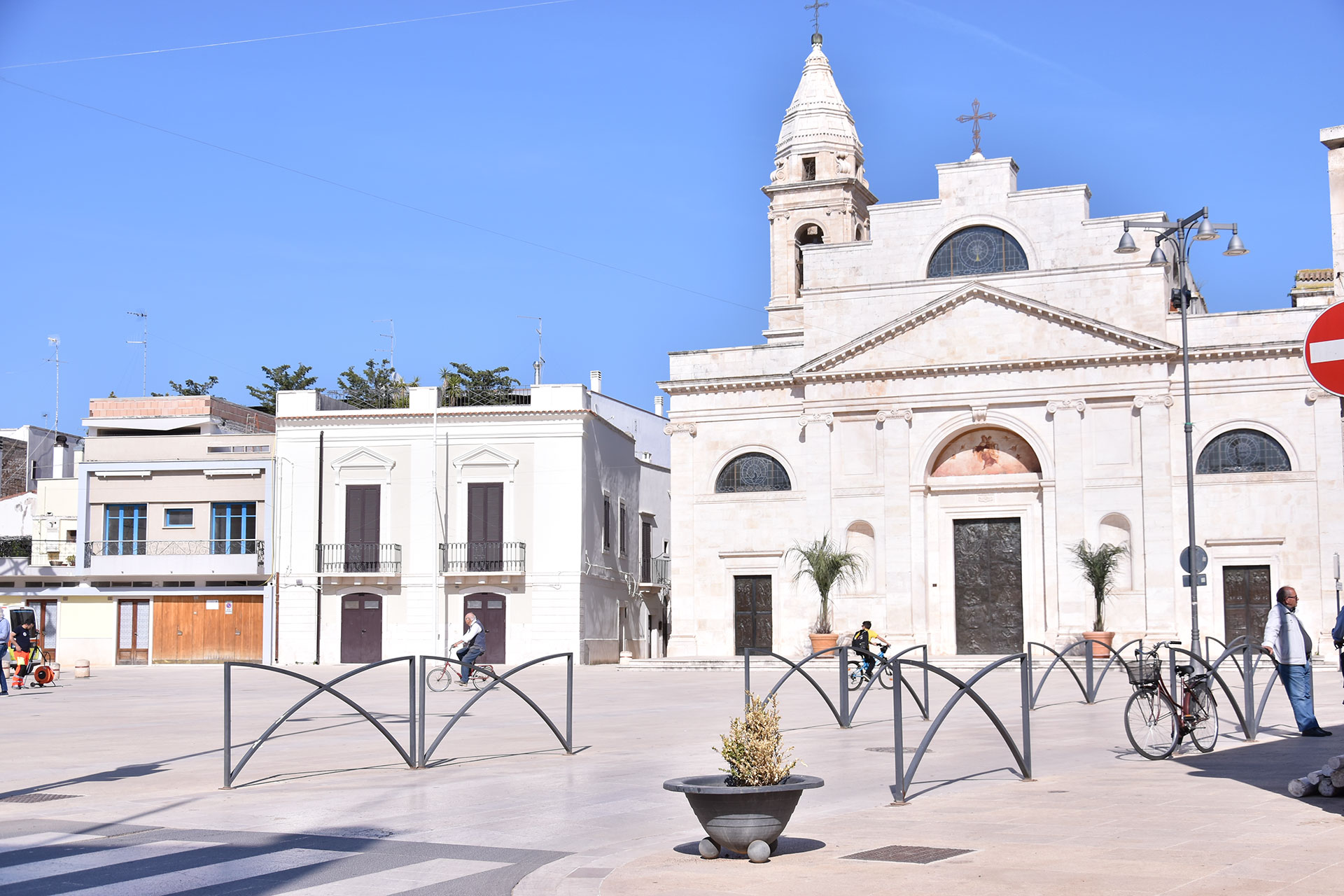
Built in the first half of the 15th century, when the territory belonged to the Prince of Taranto Giannantonio Orsini del Balzo, as a control and defense outpost in an area of great traffic and during a historically complex period from a political point of view. Today, only a few traces of the defensive preparations remain on the south side, which is practically intact. With a quadrangular plan, it has four corner bastions, nine rooms on the ground floor and as many on the first floor. Those on the second floor were the result of a later renovation to adapt the structure to various transformations of use over the centuries. Belonging to the Genoese Centurione family in the early 16th century, it then became the property of the Vaaz family in the 17th century. The progenitor Michele Vaaz, of Portuguese origin, is the one who decided to give life to the current village of Sammichele. From the Vaaz family, it passed to the De Ponte family. This family subjected the structure to the first restoration, of which there is certain news, in 1675, because it was almost collapsing. After this intervention, which transformed the building into a farmstead, the first floor remained completely separated from the ground floor and an external staircase was built for access to the “noble” floor. A loft was created on the terrace to be used as a warehouse for foodstuffs. Passed at the end of the 18th century to the Caracciolo di Vietri family, it was subjected around 1860 to further works based on the design of the architect Ascanio Amenduni from Casamassima, which transformed its appearance and turned it into a palace for vacationing with medieval lines. The construction of the crenellated towers, the remodeling of the façade, with the three entrance doors, the bifore windows on the first floor, the cladding ashlar and the central internal staircase that we see today are attributed to this intervention. In the post-World War II period, some rooms were rented by the Municipal Administration to be used first as a Town Hall and then as a school. In 1971, it was purchased by the Municipality of Sammichele to be destined as a Museum of Agricultural Civilization.
(source: https://fondoambiente.it/luoghi/castello-caracciolo-e-annessa-chiesa-ss-maria-maddalena?ldc)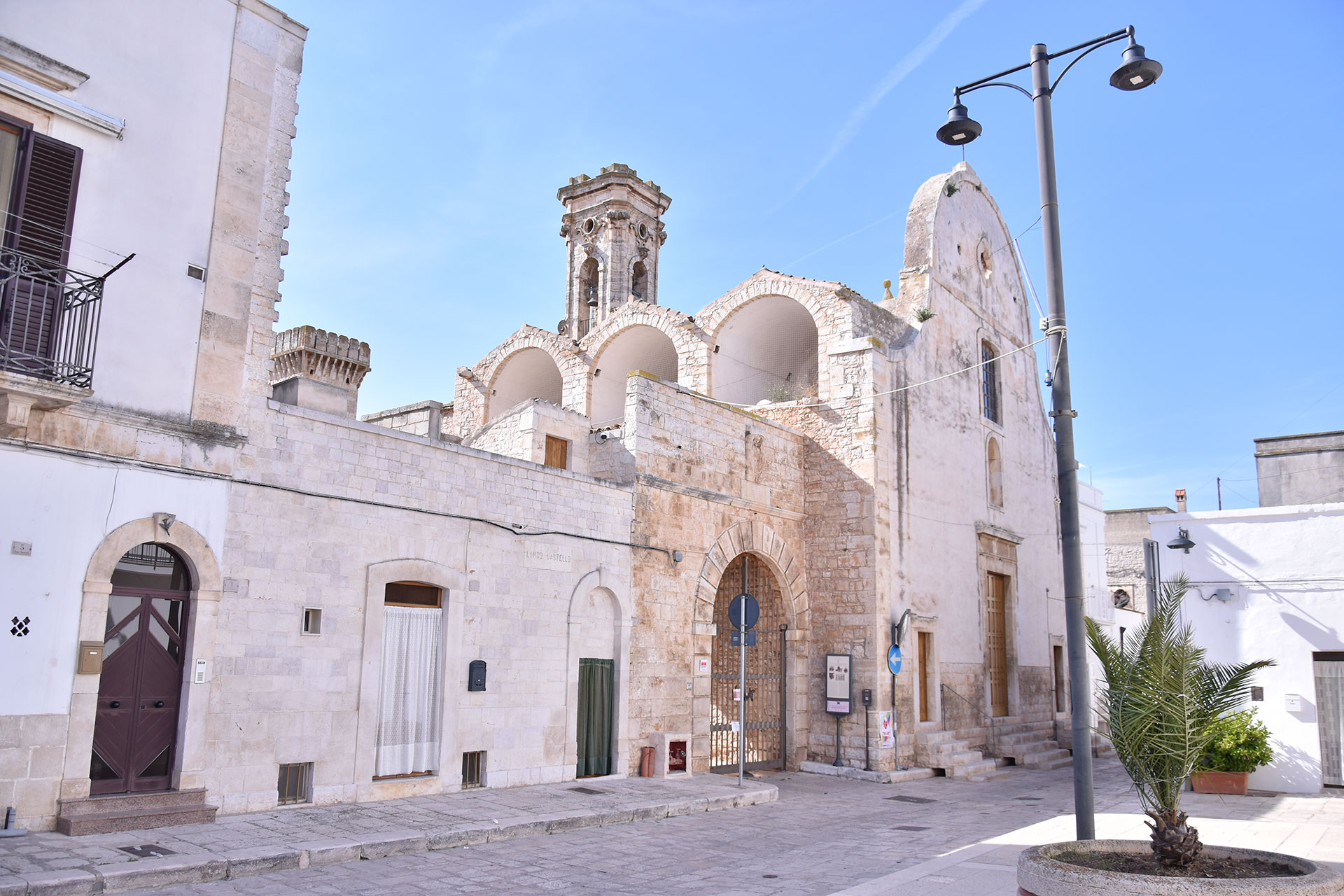
Book Your Stay
Antico Corso • Sammichele di Bari
-
POLIGNANO A MARE
Polignano Holiday Home is a holiday home located in the center of the magnificent city of Polignano a Mare, completely renovated in full respect of the typical characteristics of the place. The stone arches and modern and functional furnishings make a good sight in the Home Holiday. Equipped with all comforts: kitchen, washing machine, microwave oven, crockery, hygiene products, sheets, towels and shower towels.Price: € 160.0night -
Antico Corso 74
SAMMICHELE DI BARI
The Amaranto Room is a Double Room with a Jacuzzi hydromassage tub with chromotherapy with the possibility of adding a third bed. A room with a warm and welcoming color, with a double bed and the possibility of adding a third bed, ideal for a fairytale stay for a couple or a couple with a child. The Amaranth Room is equipped with bathroom with shower, air conditioning, minibar, TV, built-in wardrobe. A furnished room with a relaxation corner, ideal for an enchanting stay in Puglia.Price: € 120.0night -
Antico Corso 74
SAMMICHELE DI BARI
The Gold Room is a Double Room with a Jacuzzi hydromassage tub with chromotherapy which can be used with a supplement of € 40 on the basic price. An enchanting room, with a double bed, ideal for a couple's fairytale stay. The Gold Room is equipped with bathroom with shower, air conditioning, minibar, TV, built-in wardrobe. A room furnished with art objects and in golden colours, ideal for a romantic stay in the magnificent land of Bari.Price: € 80.0night -
Antico Corso 74
SAMMICHELE DI BARI
The Green Room is a family room with all the comforts. An apartment with 4 beds, 2 bedrooms, one of which is double and a living room with sofa bed. An apartment equipped with a kitchenette and crockery to taste the typical Apulian food and wine. A home furnished with taste and simplicity, ideal for a peaceful stay and for moving around easily while visiting the tourist beauties of Puglia.Price: € 160.0night

